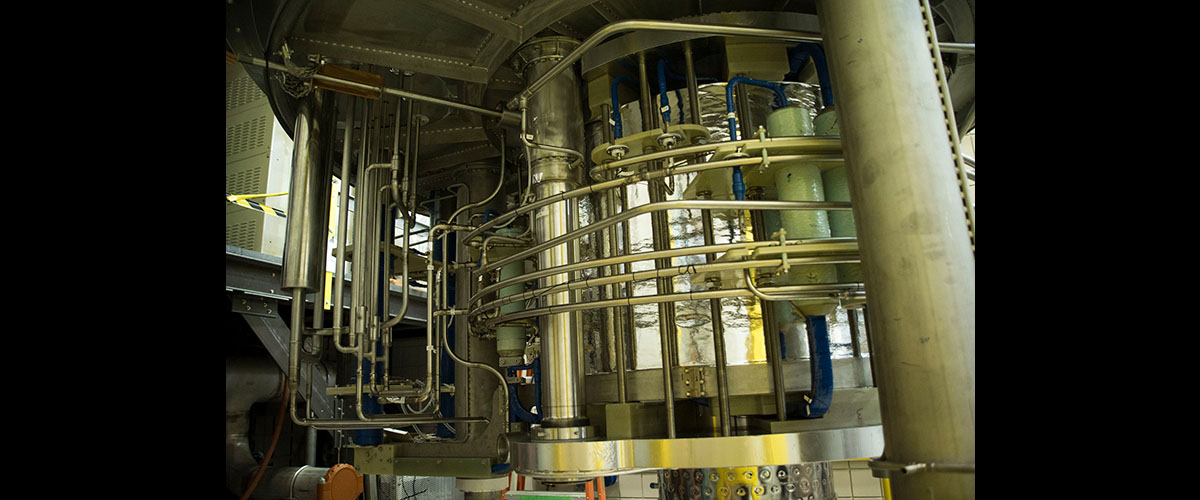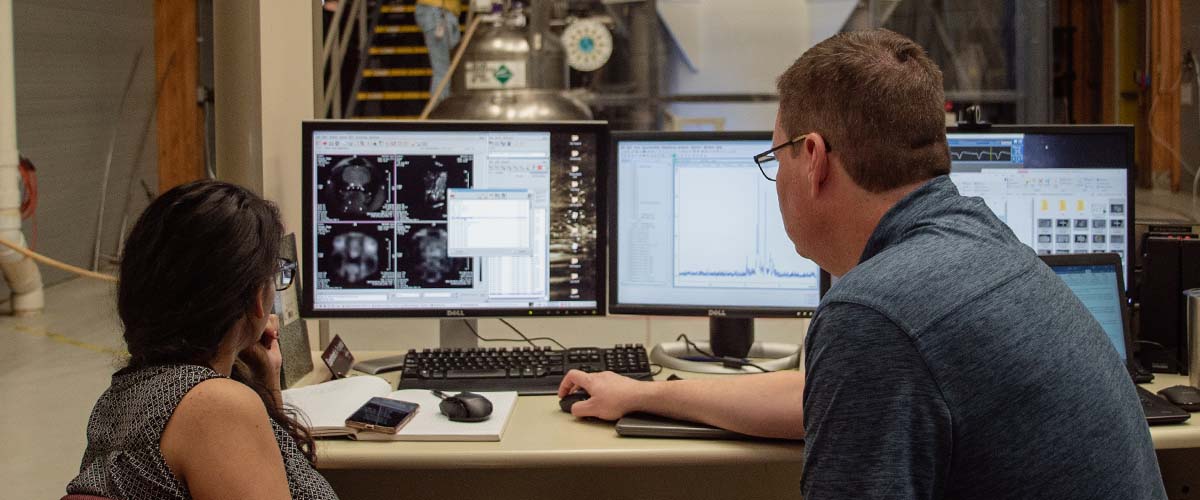You may have heard the word, "homogeneous" describing the consistency of fat particles in milk. But at the MagLab, it describes the uniformity of a magnetic field inside the hollow center (or bore) of a magnet.
So why do some scientists at the MagLab need highly homogeneous magnetic fields like babies need milk?
Well, high homogeneity means higher resolution; higher resolution makes things easier to see. And for certain types of research conducted at the MagLab — especially nuclear magnetic resonance (NMR) experiments — this increased visibility is incredibly important.
Say, for example, you wanted to make a better flu-fighting drug. You'd first need to locate the virus's weak spot so that you could configure your drug molecule to attack it.
When a scientist wants to look more closely at the atomic make-up of a substance - like a virus - they put it inside a magnetic field and fire radio frequencies at it. The substance then sends its own signal back, which the scientist can use to determine the location of certain atoms inside it. If the field strength of the magnet isn't consistent, the information the scientists collect will be vague, and the location of the atoms uncertain. It's sort of like trying to look through a telescope that is out of focus.
NMR researchers value constant field strenth over both time and space to help them expand the elements in a sample that scientists can see. It may take less than 1 part per million (ppm) of homogenetity to see different proton resonances, for example.
Here at the MagLab, we design, build and use three main types of magnets: resistive, superconducting and hybrid (a combination of resistive and superconducting).
Resistive magnets can be very strong, but are generally not as homogeneous (meaning their fields are not as stable). There are exceptions, though, like the lab's36 tesla series connected hybrid magnetwhich is the most homogeneous powered magnet ever built featuring a 1 part per million (ppm) homogeneity. Also, in the fall of 2015, the MagLab upgraded its power supply, resulting in a tenfold improvement in the field stability of the lab's resistive magnets — great news for scientists doing research here!
Superconducting magnets, however, can do even better, thanks to their more stable fields. One of our most notable superconducting magnets is the MagLab's900 MHz NMR magnet. The largest MRI scanner in the world, it produces a field of 21.1 teslas and a homogeneity of 1 part per billion - that's just about as homogeneous as it gets for magnets.
Now that's what we call milking a magnet for all it's worth!
By JOSH PALM
Photo: Stephen Bilenky.






